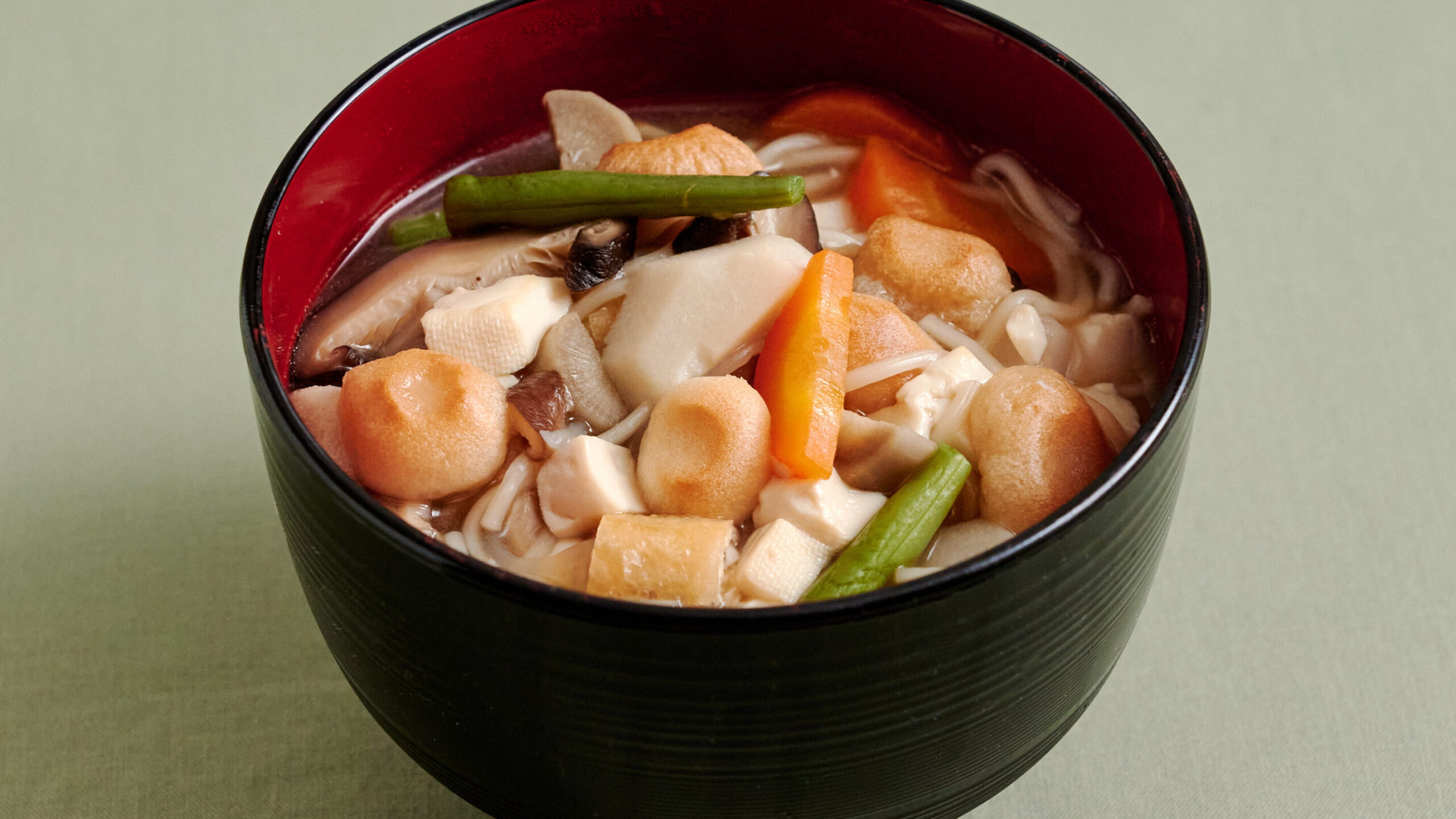
Hey there! Down in the southern part of Miyagi Prefecture, there’s this gentle and flavorful dish called “Okuzukake.” It’s a kind of vegetarian stew that’s often enjoyed during important Buddhist observances like the spring and autumn equinoxes and the Bon festival. Think of it as a way to nourish both body and soul.
Dish Name: Okuzukake
- Region / Location: Miyagi Prefecture
- Primary Area of Tradition: Southern Miyagi Prefecture (Ken-nan region)
- Main Ingredients: Taro root, carrot, burdock root, shiitake mushrooms, deep-fried tofu, tofu, Shiroishi U-men noodles, konnyaku noodles
How It’s Eaten / Served
This dish is made by simmering various vegetables, tofu, fried tofu, and wheat gluten in the broth from rehydrated shiitake mushrooms. Then, the local specialty, Shiroishi U-men noodles, are added, and the whole thing is thickened with kudzu starch (though potato starch is often used today). It’s usually served in individual bowls or donburi. While traditionally vegetarian, some families might add chicken or pork, and sometimes regular udon noodles are used instead of U-men.
Cultural Background and Preservation
Primarily a Shojin Ryori (Buddhist vegetarian cuisine) enjoyed during the spring and autumn equinoxes and the Bon festival in southern Miyagi, Okuzukake also serves as a form of hospitality for gatherings during memorial services. It’s both an offering to the deceased and a comforting family meal. The Shiroishi U-men noodles, a local specialty from Shiroishi City, are a bit thicker than somen and are known for being easy to digest since no oil is used in their production. The vegetables used are typically seasonal, but vary from household to household. Interestingly, similar dishes called “Suppoko” and “Noppei-jiru” exist in the northern part of the prefecture, with the main difference being whether they are eaten on special occasions or more regularly. While you can find Okuzukake year-round in some restaurants catering to tourists in the Sennan region, efforts to preserve and promote this dish include cooking classes and demonstrations organized by the Ogawara Regional Promotion Office in cooperation with groups like the “Miyagi’s Food Transmission Association.” You can even find a similar dish called “Zurubiki Ankake-jiru” at the “Kamihin no Sato” roadside station in Ishinomaki City.
Additional information:
- Shojin Ryori: Buddhist vegetarian cuisine, which avoids meat, fish, and often strong-flavored vegetables like garlic and onions.
- Bon festival: A Japanese Buddhist custom to honor the spirits of one’s ancestors.
- Shiroishi U-men: A type of thin, dry noodle from Shiroishi City in Miyagi Prefecture, known for its smooth texture and the fact that no oil is used in its production.
- Konnyaku noodles (shirataki): Translucent, gelatinous noodles made from the konjac yam.
- Kudzu starch (kuzuko): A starch derived from the kudzu plant, often used as a thickening agent in Japanese cuisine. Potato starch (katakuriko) is a common substitute.
- Donburi: A Japanese rice bowl dish consisting of fish, meat, vegetables, or other ingredients simmered together and served over rice.
The information about regional cuisine featured on this website (Piggy's Grandma of Japan) is summarized and adapted from the Ministry of Agriculture, Forestry and Fisheries of Japan (MAFF) website, "Our Regional Cuisines"Additional commentary is provided based on the unique experiences and perspectives of the site's editors.
The copyright for the original content regarding regional cuisine belongs to the Ministry of Agriculture, Forestry and Fisheries of Japan.
The summaries and adaptations published on this site are intended for informational purposes only. Piggy's Grandma of Japan does not guarantee the accuracy or completeness of this information. For the most accurate and complete details, please refer to the original pages on the MAFF website.

